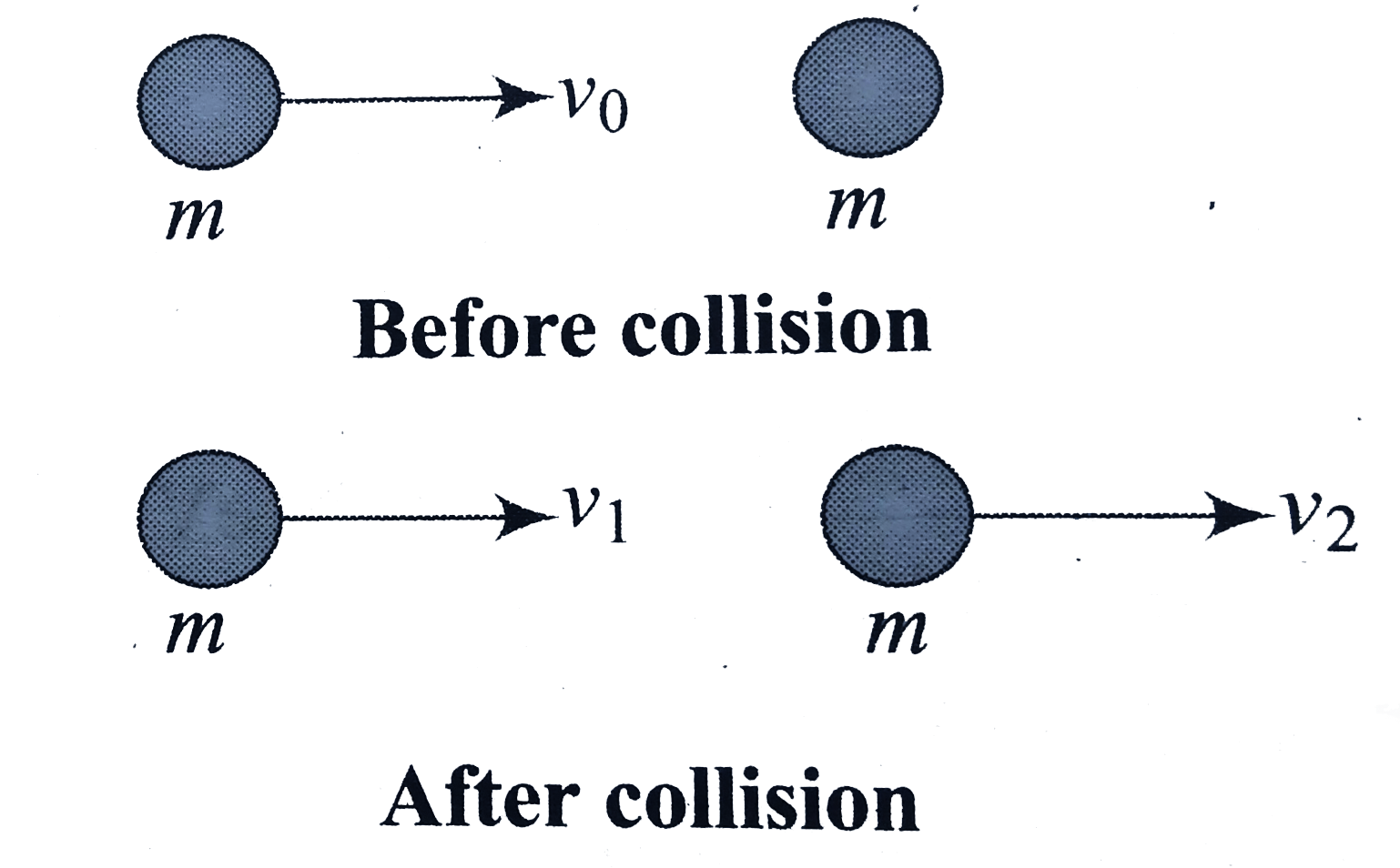A hydrogen atom having kinetic energy E collides with a stationary hydrogen atom. Assume all motions are taking place along the line of motion of the moving hydrogen atom. For this situation, mark out the correct statement (s).
For E≥20.4eV only, collision would be elastic.
For E≥20.4eV only, collision would be inelastic.
For E=2.4eV only, collision would be perfectly inelastic.
For E=18eV the KE of initially moving hydrogen atom after collisition is zero.
The correct Answer is:B, C, D
Let collisition between two atoms be an elastic one . From momentum conservation, mv0=mv1+mv2
 from energy conservation,
from energy conservation,
mv212+mv222−mv202=−ΔE
where ΔE is the energy absorbed by the initally stationary atom to changes its state.
Solving above equation, we get
(v1−v2)2=v20=−4ΔEm
For collision to be inelastic collisition, (v1=v2)2 ge 0: a real quantity [equal to sign for perfect inelastic collision.]
The minimum value of ΔEis10.2eV, so for collision inelastic E≥20.2eV
For perfectly inelastic collision v1=v2 and hence E=20.4eV for E=18eV, the collisition is elastic one and as masses are the same , velocity would be interchanged during collision.
Related Playlists
- BOOK - CENGAGE PHYSICS ENGLISHCHAPTER - ATOMIC PHYSICSEXERCISE - Multiple Correct13videos
ATOMIC PHYSICS
- BOOK - CENGAGE PHYSICS ENGLISHCHAPTER - ATOMIC PHYSICSEXERCISE - Linked Comprehension62videos
ATOMIC PHYSICS
- BOOK - CENGAGE PHYSICS ENGLISHCHAPTER - ATOMIC PHYSICSEXERCISE - Subject17videos
ATOMIC PHYSICS
- BOOK - CENGAGE PHYSICS ENGLISHCHAPTER - ALTERNATING CURRENTEXERCISE - Single Correct10videos
ALTERNATING CURRENT
- BOOK - CENGAGE PHYSICS ENGLISHCHAPTER - CAPACITOR AND CAPACITANCEEXERCISE - Integer5videos
CAPACITOR AND CAPACITANCE
Similar Practice Problems
- Question 1 - Select One
Total energy of electron in nth stationary orbit of hydrogen atom is
A−13.6neVB−13.6n2eVC−136neVD−136n2eV - Question 1 - Select One
Total energy of electron in nth stationary orbit of hydrogen atom is
Ae24πε0rB−e24πε0rC−e28πε0rDe28πε0r
Similar Questions
An electron of kinetic energy K collides elastically with a stationary hydrogen atom in the ground state. Then,
View SolutionIn hydrogen atom, the energy of second shell eΘ
View SolutionTotal energy of an electron in nth stationary orcit of hydrogen atom can be obtained by
View SolutionA moving hydrogen atom makes a head on collision with a stationary hydrogen atom. Before collision both atoms are in in ground state and after collision they move together. What is the minimum value of the kinetic energy of the moving hydrogen atom, such that one of the atoms reaches one of the excited state?
View SolutionA moving hydrogen atom makes a head on collision with a stationary hydrogen atom. Befor collision both atoms are in in ground state and after collision they move together. What is the minimum value of the kinetic energy of the moving hydrogen atom, such that one of the atoms reaches one of the excited state?
View SolutionA moving hydrogen atom makes a head on collision with a stationary hydrogen atom. Before collision both atoms are in in ground state and after collision they move together. What is the minimum value of the kinetic energy of the moving hydrogen atom, such that one of the atoms reaches one of the excited state?
View SolutionA moving hydrogen atom makes a head on collision with a stationary hydrogen atom. Before collision both atoms are in in ground state and after collision they move together. What is the minimum value of the kinetic energy of the moving hydrogen atom, such that one of the atoms reaches one of the excited state?
View SolutionWhat is active alpha hydrogen atom ? Name one reaction that takes place due to the presence of such a hydrogen.
View Solution

